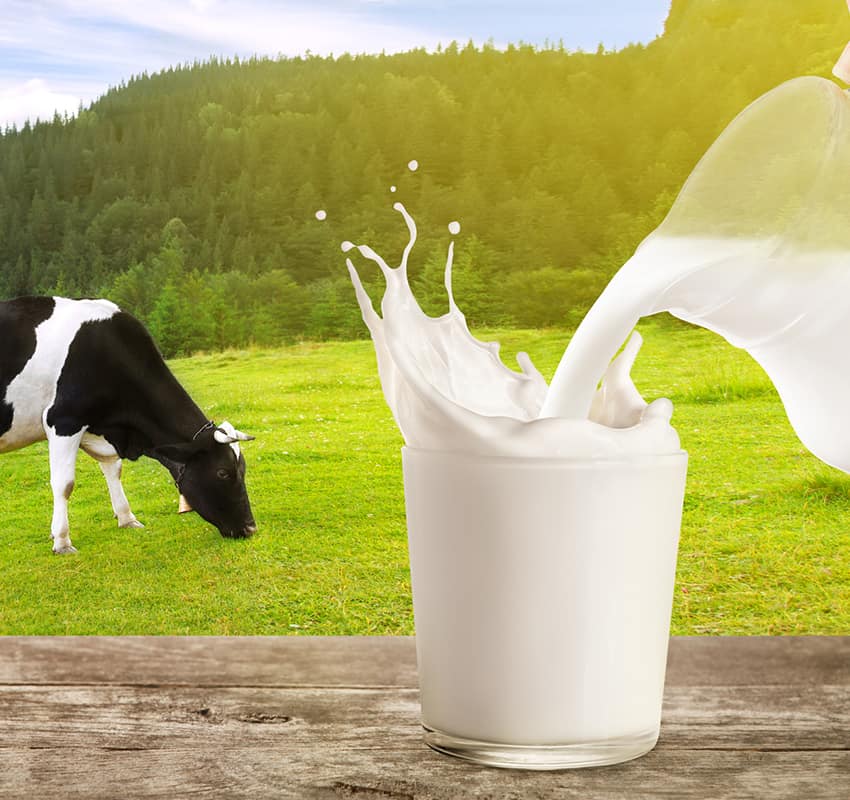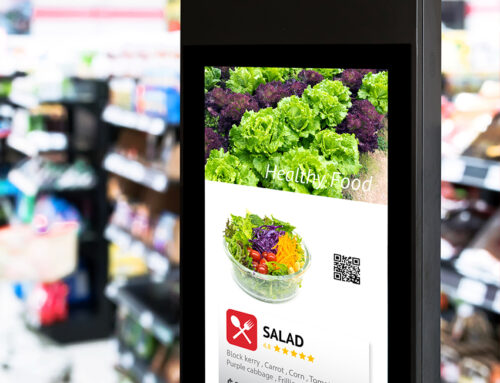Milk Advertising can include a wide range of products and product types outside of just plain old milk. These include:
- Yogurt
- Cheese
- Ice cream, frozen yogurt, and other frozen milk-based desserts
- Vegan or plant-based milk like almond milk, soy milk, cashew milk, etc.
- Butter
- Milk-based protein such as whey powder
- Lactose supplements
- Horchata
- Other milk-based novelties
So how can a food brand begin advertising milk in a way that brings in genuine leads? It all starts with target marketing.
How to Properly Advertise Milk
Targeted marketing involves advertising to very specific demographics through very specific blogs and web pages.
In the case of milk, throwing out a wide net of generalized advertising may not be as lucrative as one may think. When it comes to any kind of food advertising, it’s important to meet grocery buyers where and when they want your products.
For example, a foodie may be thinking about making a dish for an upcoming party. They aren’t necessarily thinking about milk in this instance. Just as well, some of the initial recipe pages they look at may not call for milk. So why would an advertiser both advertising a milk product if the reader has no use for it?
In this specific instance, that milk ad should be placed on a recipe page for a milk-based recipe. If the prospective customer decides that they want to follow that recipe, they’ll see your ad as an opportunity to purchase high-quality milk for the recipe. Makes sense, right?
Unfortunately, lots of food brands get this wrong when it comes to advertising. The spray and pray approach by placing ads on random blogs and websites that are not relevant might work in the short term but not for long term sustainable brands. The smart way to advertiser milk is by placing ads on pages that involve milk, particularly on recipe pages, which is called contextual advertising.
Breakfast, Brunch, and Coffee Recipe Targeting
We’ve established how valuable target advertising is when it comes to advertising milk. When it comes to recipe targeting for milk products, the three main options that are the most lucrative are breakfast, brunch, and coffee recipe marketing.
The following are some food advertisement examples that demonstrate the versatility of milk as an ingredient. Let’s take a look at some examples.
Milk is one of the most common ingredients found in breakfast dishes. For breakfast marketing, placing milk ads on the following recipes could bring in a substantial amount of leads:
- Cod and potatoes in milk
- Baked herb custard
- Milk waffles
- Mushroom and bacon lasagna
- Breakfast casserole with eggs, milk, potatoes, cheese, and sausage
- Homemade Eggs Benedict
- Traditional breakfast quiche with whole milk and mushrooms
- French toast
- Breakfast strata
- Breakfast quinoa
- Overnight oats with almond milk and chia seeds
- Southern white gravy
- Buttermilk beignets
- Traditional whipped and scrambled eggs
- Baked eggs with coconut milk
- Crêpes
- Bread pudding
Milk is a staple ingredient in many brunch dishes. For brunch marketing, placing milk ads on the following recipes could bring in a substantial amount of leads:
- Milk jelly with fruit
- Milk and fruit popsicles
- Custard cream pie
- Strawberry milkshakes
- Beef stroganoff
- Dulce de leche
- Mac and cheese
- Milk pie
- Old fashioned sugar pie
- Coconut milk curry
- Creamed corn
- Cast-iron pan cornbread
- Green bean casserole
- Au Gratin
- Alfredo sauce
Milk and coffee go together like bread and butter. For coffee marketing, placing milk ads on the following recipes could bring in a substantial amount of leads:
- Almond milk espresso float
- Cashew milk mocha
- Cinnamon chocolate iced cappuccino
- Minimalist brewed ice cafe latte
- Cappuccino frost
- Coffee jelly with ice cream
- Coffee-vanilla frappuccino
- Frozen mochaccino
- Honey cinnamon iced latte
- Coffee cake
- Mocha truffles
- Tiramisu
- Eggnog coffee
- Coffee-flavored flan
- Coffee parfait
- Irish cream











